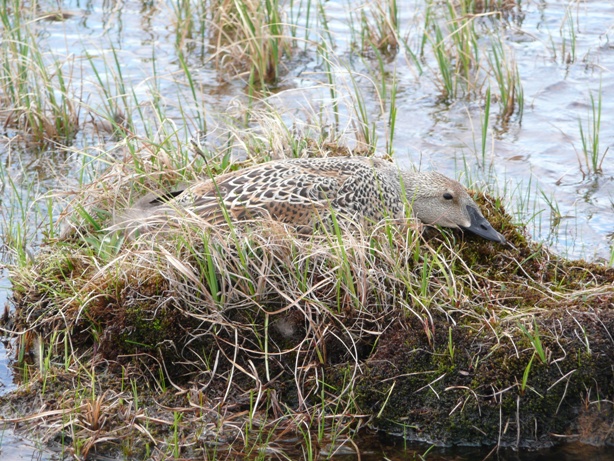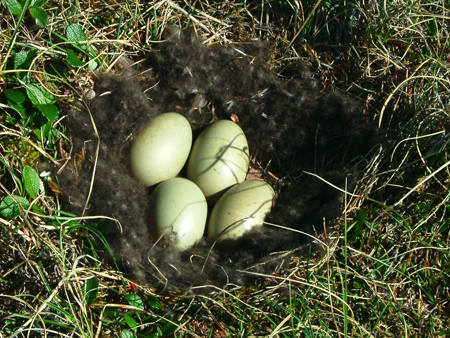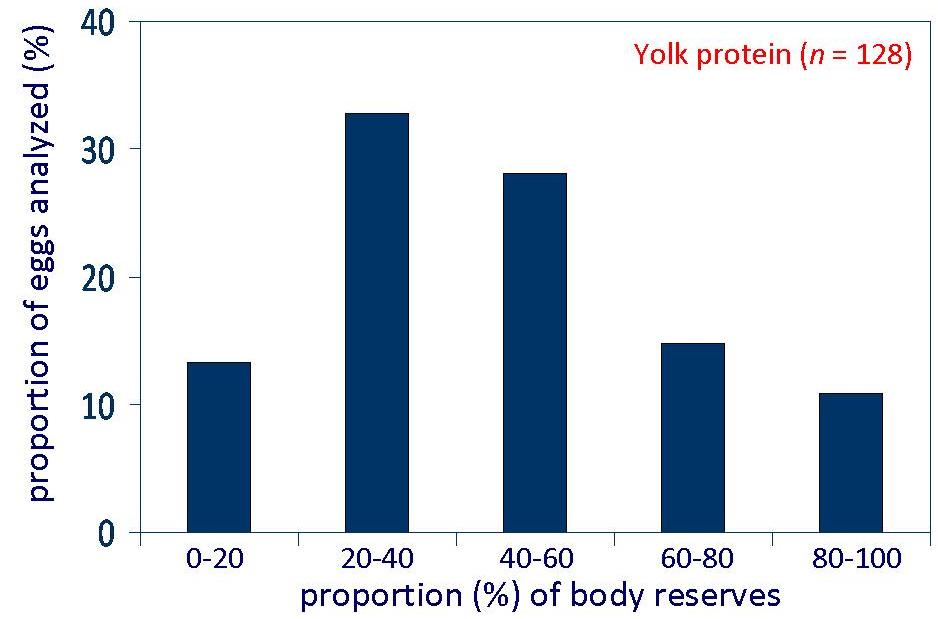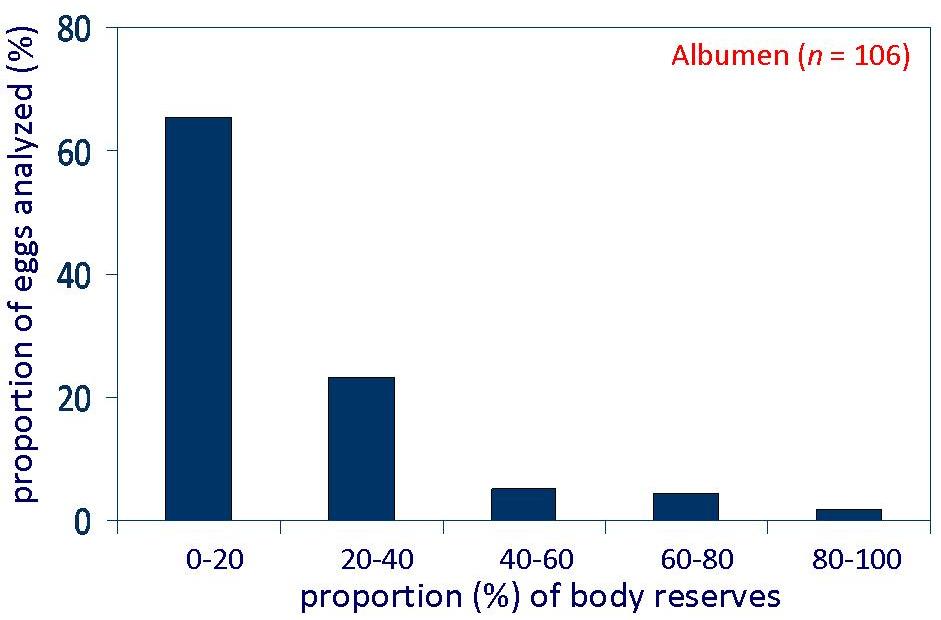
Seasonal interactions: spring migration-breeding season
 |
King Eiders arrive on breeding grounds in early June, when many of the water bodies on the tundra are still frozen or covered with snow and ice. Food availability may be low, but as the birds have to raise offspring during a short summer they need to start laying eggs shortly after arriving on breeding grounds. Producing eggs is energetically expensive, and at times of low food availability birds may resort to body reserves to provide nutrients to egg formation. |
| We investigated to what extent spring migration and the early breeding season are linked in King Eiders by quantifying the amount of body reserves that are invested into eggs. King Eiders accummulate body reserves during spring migration in the Chukchi Sea, and those body reserves differ in their isotopic composition from prey items available on breeding grounds. We used isotopic mixing model to trace the origin of nutrients in egg yolk and albumen. |  |
 |
King Eiders use on average very few body reserves to produce their eggs, and appear to retain their body reserves for the incubation period when the female rarely leaves the nest to forage and thus depends on stored reserves. However, we found very large individual variation among eggs and nests, and King Eiders are clearly capable of producing eggs either from nutrients available on breeding grounds or from body reserves. Future research needs to examine the causes of this variation, and whether it changes with the age and experience of a female, or her migration strategy or body condition. |
| Proportional contribution of body reserves in King Eider lipid-free yolk (above) and albumen (right). We found eggs that were synthesized almost completely from body reserves, and others that had virtually no body reserves in them. |  |